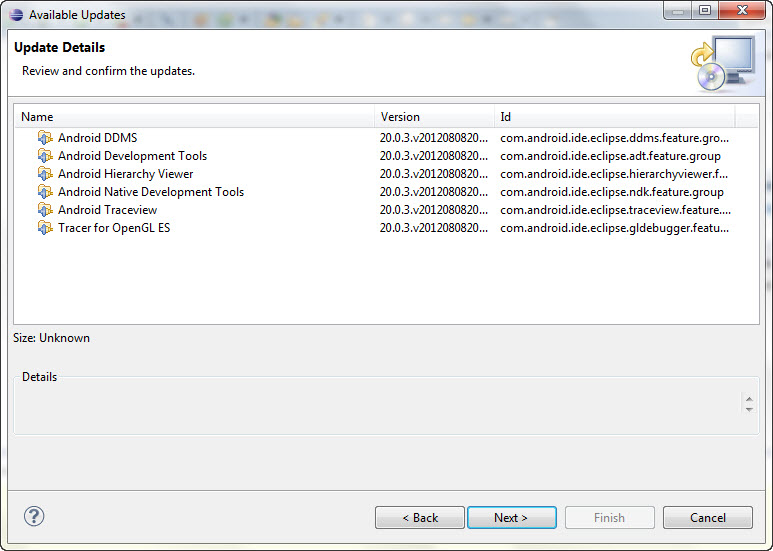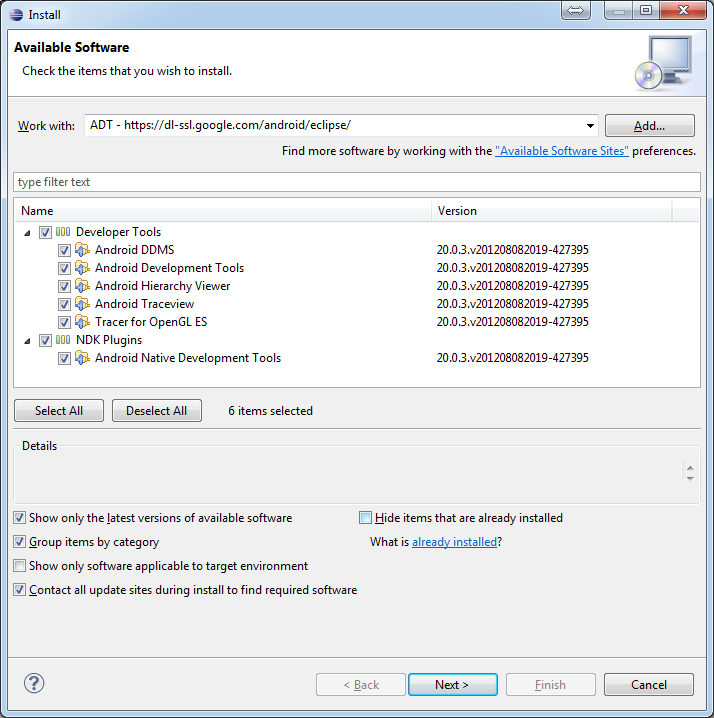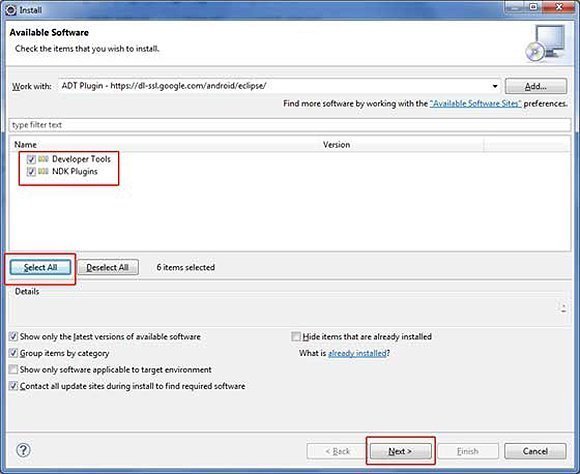

- Android adt eclipse plugin install#
- Android adt eclipse plugin update#
- Android adt eclipse plugin upgrade#
- Android adt eclipse plugin android#
- Android adt eclipse plugin software#

Android adt eclipse plugin update#
If Eclipse can not find the remote update site containing the ADT plugin, try changing the remote site URL to use http, rather than https.If you are having trouble downloading the ADT plugin after following the steps above, here are some suggestions: To get these packages for your SDK, continue to Adding
Android adt eclipse plugin android#
Your Eclipse IDE is now set up to develop Android apps, but you need to add the latest SDK platform tools and an Android platform to your environment.
Android adt eclipse plugin software#
If you get a security warning saying that the authenticity or validity of the software can't be established, click OK.
Android adt eclipse plugin install#
Start Eclipse, then select Help > Install New Software.Instead, you can directly use the SDK tools to build and debug your application. Note: If you prefer to work in a different IDE, you do not need to install Eclipse or ADT. If you need to install Eclipse, you can download it from Projects, build an app UI, debug your app, and export signed (or unsigned) app packages (APKs) for distribution. It extends the capabilities of Eclipse to let you quickly set up new Android This plugin provides a powerful, integrated environment in which to develop Android apps. Instead of using a hard-coded string value ('Hello world!') in ' ' element, the value refers to a string resource defined in strings.xml.įor this application we do not require to change anything in the generated activity code.įile: HelloActivity.java package offers a custom plugin for the Eclipse IDE, called Android Development Tools (ADT). 'activity_hello.xml' is the layout built using ' Android Common XML Editor'. 'hello_world' resource string contains the message 'Hello world!' which will be shown on launching of the application. Here we can build UI by simply dragging and dropping UI components from the Palette. 'android_hello.xml' (layout) will be opened using ' Android Common XML Editor'. Overall Project StructureĪndroid project will be created with some default files as shown below

Android adt eclipse plugin upgrade#
In this case click Next button and hit ' Install/Upgrade' button to install or upgrade required dependencies.įinally click Finish button. If Finish button is not enabled and Next is enabled that means required dependencies (Supporting library) are not installed. For demonstration purpose, I have changed few settings as shown belowĬhoose an activity template (say ' BlankActivity') and click Next button.Įnter ' Activity Name' (say 'HelloActivity') and click Finish button. Click Next buttonĬhoose your App icon and configure as per your requirement. To make it simple you can leave the dropdown value as it is. Select ' Minimum Required SDK' (lowest version of Android that this app supports), ' Target SDK' (highest version of Android with which this application has been tested), ' Compile With' (platform version against which this application will be compiled with) and ' Theme' (Android UI style) from the corresponding theme. Select from the menu File -> New -> Other -> Android -> Android Application Project (say 'AndroidHello') and click Next button.Įnter Application, Project and Package Name. Tools & Technologies used in this article : Here, we'll use Eclipse IDE with Android Developer Tools (ADT) plugin to build the application and Android Emulator - Android Virtual Device (AVD) to run the application which will draw 'Hello World!' text on the screen. This tutorial will help you to write your first Android 'Hello World!' program.


 0 kommentar(er)
0 kommentar(er)
